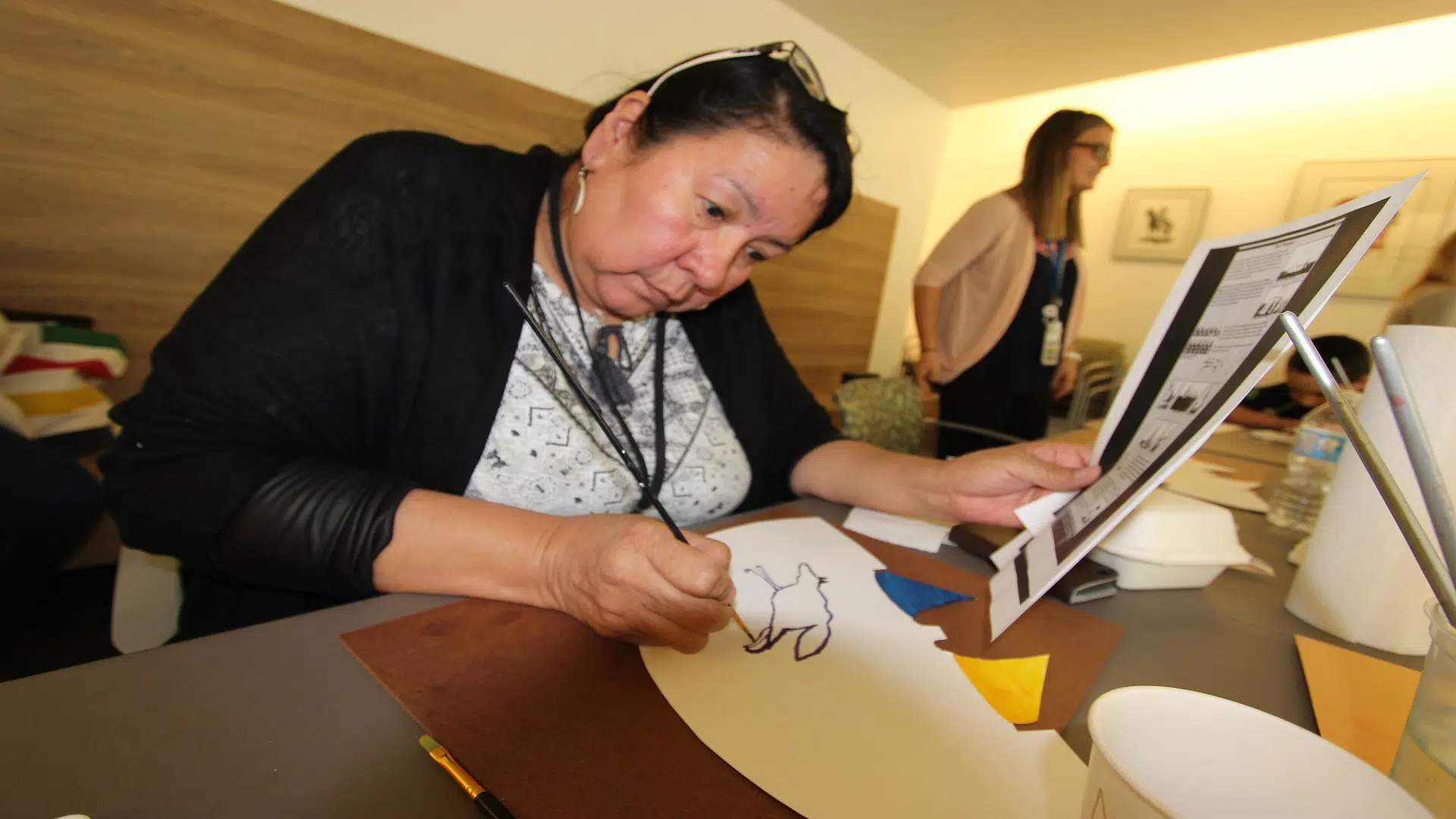
CRH patients find healing within SOAR – Spirit of Art and Reconciliation program
LETHBRIDGE — It’s Thursday afternoon and several people filter in to the Golden Eagle Lodge on Chinook Regional Hospital’s fourth floor. They have come for the weekly Spirit of Art and Reconciliation program (SOAR), a joint initiative developed by the Indigenous Health Program and Therapeutic Recreation.
On this day, they’re creating a tipi out of stiff paper and other supplies, while learning the historical meanings behind tipi designs of First Nations tribes. Relaxing music plays. They laugh and talk, or sometimes just work in silence. Some patients are Indigenous people and others are not – everyone is welcome – but the cultural underpinnings of SOAR are built on First Nations traditions and practice.
Participants have experienced healing through art in this way since the start of 2018 on these Thursday afternoons. The drop-in group is designed to help patients – some former patients return each week, too – create Indigenous art while learning about the culture associated with it, to tell stories and to connect with one another.
Heidi Davis, an AHS Recreation Therapist who created the program together with the Indigenous Health team in the South Zone, helps participants when needed, while Ann Fox – the Zone’s Traditional Wellness Counselor – leads them first in a smudge ceremony and imparts cultural wisdom throughout the afternoon.


